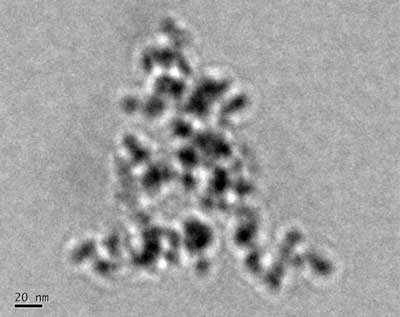| Posted: Feb 21, 2018 |
Rapid detection of pesticide residue with nanoparticles
(Nanowerk News) NUS food scientists have developed polystyrene coated magnetic nanoparticles which allow rapid screening of trace amounts of pesticide residue in vegetable crops (Food Chemistry"Pyrethroid residue determination in organic and conventional vegetables using liquid-solid extraction coupled with magnetic solid phase extraction based on polystyrene-coated magnetic nanoparticles").
|
 |
| Figure illustrates the process involved in using the polystyrene coated magnetic nanoparticles (“micro magnets”) to extract trace pesticide residues from vegetable samples. (Image: Yu Xi)
|
|
Pesticides are often used in vegetable farming to increase crop yield by controlling agricultural pests that can damage crops. Pyrethroids are a type of synthetic pesticide which are widely applied to crops. However, there are increasing concerns with pyrethroid residue on vegetables as long-term exposure may lead to health issues.
|
|
A research team led by Prof YANG Hongshun from the Food Science & Technology Programme at the Department of Chemistry, NUS has developed polystyrene coated magnetic nanoparticles to detect trace amounts of pyrethroids in leafy vegetable samples. These nanoparticles with magnetic cores, when added for screening purposes to a liquid sample of vegetable crops, can effectively attract the pyrethroid compounds. The nanoparticles can then be separated easily from the rest of the sample by magnetic means for analysis.
|
 |
| Transmission electron microscopy image of the polystyrene coated magnetic nanoparticles. The nanoparticles have a diameter of about 20 nm. (Image: NUS)
|
|
Conventional screening methods typically use tedious processes such as filtration and centrifugation to isolate and ascertain the presence of pyrethroids. The approach developed by Prof Yang and his team is a simpler process in which the extraction process can be completed within an hour. Possible applications could include vegetable screening and monitoring programmes to improve food supply safety.
|
|
Ms YU Xi, a Ph.D. student working on the project said, “In terms of the accuracy, the recovery rates in our experiments for five kinds of commonly used pyrethroids were greater than 91.6%, which is comparable to conventional methods. This method is also more cost effective as the nanoparticles can be washed and recycled after use.”
|
|
“Chemical residue in food products is an important food safety issue for consumers. This method offers a fast and effective way to screen vegetable samples for residue pesticides. It can potentially be adapted for other types of food samples. With small modifications, various food products such as fruits, nuts, meat and vegetable oils can also be tested using this method for possible food hazards,” added Prof Yang.
|


